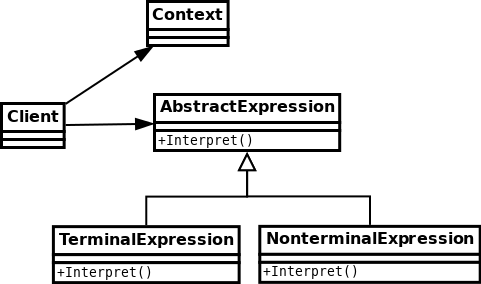模式说明
所谓解释器(Interpreter)就是将一系列指令转化成代码,能够执行的代码。Interpreter本来就有翻译的意思。GoF给它的定义是:给定一个语言,定义它的文法的一种表示,并定义一个解释器,这个解释器使用该表示来解释语言中的句子。
模式结构图

程序示例
说明:一个上下文类;一个解释器,两个派生解释器
代码:
1 class Context(object): 2 def __init__(self, msg): 3 self._msg=msg 4 def getmsg(self): 5 return self._msg 6 7 class Interpretor(object): 8 def interpret(self): 9 pass 10 11 class UpperInterpretor(Interpretor): 12 def __init__(self, context): 13 self._context=context 14 15 def interpret(self): 16 msg = self._context.getmsg() 17 print str(msg).upper() 18 19 class LowerInterpretor(Interpretor): 20 def __init__(self, context): 21 self._context=context 22 23 def interpret(self): 24 msg = self._context.getmsg() 25 print str(msg).lower() 26 27 if __name__=='__main__': 28 context = Context('ABCdef') 29 upper = UpperInterpretor(context) 30 lower = LowerInterpretor(context) 31 32 upper.interpret() 33 lower.interpret()
运行结果:

参考来源:
http://www.cnblogs.com/chenssy/p/3679190.html
http://www.cnblogs.com/wuyuegb2312/archive/2013/04/09/3008320.html
http://www.cnblogs.com/imakoo/articles/2944578.html